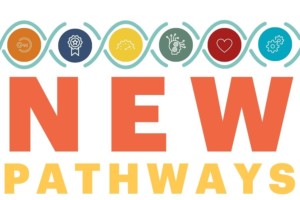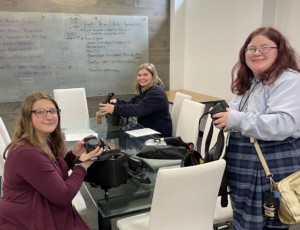Pathways in Lincoln Land

One full day of Illinois education policy and conversations about education technology has come and gone, and it was pretty impressive. Illinois likes to think of itself as a strong state for math and engineering. Facts show otherwise, and ed leaders here know that, but some fascinating ideas were sparked in this lunch put together by the Illinois Policy Institute.
One thing is clear. Education reform in this state is not about the technology, exclusively. It’s about the children. Three bright minds showed that today.
Michael Horn of the Innosight Institute, Susan Patrick, President of iNACOL, and Sharon Hayes, Director of Student Development for K12 in Illinois spoke today at a policy luncheon just steps from the state capitol in Springfield, Illinois. I’ll have a much more elaborate report later, but here are the fine points.
You can check the Twitter Stream for this at the #springedu hashtag.
Brief End of Day Download
Students are very aware of how each other thinks, socially, so those are the people that they congeal with best. Technology really helps focus the student to be more student-centric in their learning, if you catch my drift. One of the ways they do that is through peer-to-peer learning.
The thing about technology is that most of the technology that students find most responsive to the ways they think are not to be found in the classroom. Most technology these days is really not hardware, it’s software. And most software is in the cloud, and on the web. IT’s applications that help them communicate. Students everywhere are learning and teaching each other on YouTube. Just look at all the videos about coding, using Photoshop, and film editing. I even use some of these videos to learn how to edit film. Often, these videos are done by kids who are 12 years old, or even younger.
What does this tell me? It tells me two things:
1. Kids use the web to find things that are useful to them. We shouldn’t call them consumers, but in this way they really are consumers. They are searching for what they want. That search and the data from that search should tell us what in the world is important. Not just to students, but to everyone. If students are the future, and students are searching for things that help them fulfill their imagined future, then why is it so hard for us adults to see that this is the future that they will become???
2. Kids are not often using this software in school. They are staring out the window and looking for meaning, not in that which is presented in class, but that which they remember from outside of class.
The big picture: Student needs are often being ignored in the classroom. And student needs are not necessarily the achievement and standards needs that the governments, state and federal, want them to achieve. What students seem to really need — and some very bright teachers will confirm this — is someone who understands the way they think, so that they can begin to learn in the way they want to learn.
Yes, students need guidance. But a social web also means a self-regulating and transparent system. We can literally see how people think. That’s the hugest hurdle. It seems to me that education was partly inspired by the need to “see” thinking. To be able to visualize in whatever way we could, the thoughts we need to have in order to achieve a certain outcome.
WE can do that now. We should not be thinking too hard about how to keep the day structured, or the classroom aligned with political expediency. We should be thinking about pathways to careers, pathways to meaning and pathways to self-realization.



0 Comments
Leave a Comment
Your email address will not be published. All fields are required.